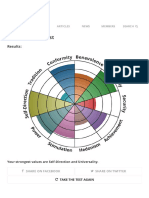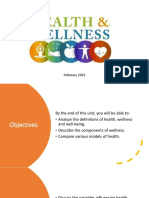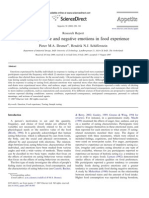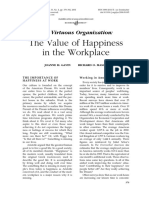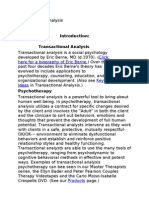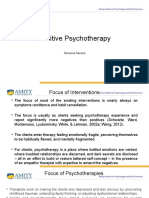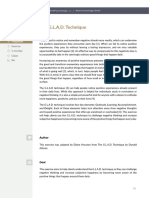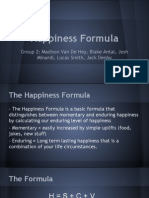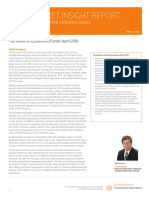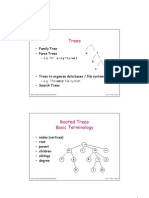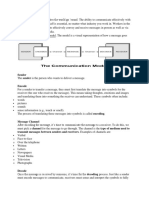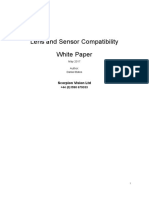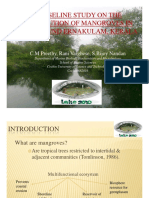What Is Happiness
What Is Happiness
Uploaded by
emirav2Copyright:
Available Formats
What Is Happiness
What Is Happiness
Uploaded by
emirav2Original Title
Copyright
Available Formats
Share this document
Did you find this document useful?
Is this content inappropriate?
Copyright:
Available Formats
What Is Happiness
What Is Happiness
Uploaded by
emirav2Copyright:
Available Formats
See
discussions, stats, and author profiles for this publication at: https://www.researchgate.net/publication/265750936
What is Happiness?
Article
CITATIONS READS
0 4,669
4 authors:
Ahmad Alipour Ahmad Pedram
Payame Noor University Islamic Azad University of Sabzevar
54 PUBLICATIONS 178 CITATIONS 2 PUBLICATIONS 0 CITATIONS
SEE PROFILE SEE PROFILE
Mohammad Reza Abedi Zeinab Rostami
University of Isfahan University of Isfahan
31 PUBLICATIONS 109 CITATIONS 13 PUBLICATIONS 33 CITATIONS
SEE PROFILE SEE PROFILE
Some of the authors of this publication are also working on these related projects:
Optimism in coronary heart disease View project
medical education paper View project
All content following this page was uploaded by Ahmad Alipour on 31 March 2015.
The user has requested enhancement of the downloaded file.
ijcrb.webs.com APRIL 2012
INTERDISCIPLINARY JOURNAL OF CONTEMPORARY RESEARCH IN BUSINESS VOL 3, NO 12
What is Happiness?
Ahmad Alipour6, Ahmad Pedram7, Mohammad Reza Abedi8, Zeinab Rostami9
Abstract
Recently the researchers attend to positive psychology instead of attention to negative
problems as disorders and disturbances. Happiness and happy person has spicily
characteristics and benefits that the person how is depressed or unhappy hasn't it. In this
study tried to more know happiness, the benefits and the role of happiness in other domain
like as work and etc.
Keywords: Positive psychology, Happiness, The history of happiness
Introduction
Happiness is primarily a subjective phenomenon “for which the final judge is whoever
lives inside a person’s skin” (Diener, 1984). The ancients believed happiness was not achieved,
but either god-given or due to chance. If happiness was experienced, it was not a function of the
individual but rather was generously bestowed upon them by the cosmos (Bruhin et al, 2009).
At what point in time did happiness change from a divine gift to a self-evident truth?
Enlightenment thinkers believed that happiness could be attained in this life. If one were not
happy, the logic went; the prescription was to alter one’s beliefs, customs, government, or living
conditions. Happiness as a self-evident truth is reflected in The Constitution and remains today.
Peruse the self-help section of a local bookstore, and books on happiness abound. But is being
happy as easy as people are led to believe (Clark et al, 2010)?
People typically equate happiness with the yellow smiley-faced icon. Happiness, many
maintain, is about feeling “good.” It is about massages, lazy Sundays, and poolside margaritas.
Hershey’s has even recently marketed a dark chocolate bar that has happiness imprinted all over
it. Consumers are presumably meant to believe happiness will engulf them with each morsel.
After all, eating chocolate is followed by joy. However, happiness is not solely synonymous with
intense pleasure; that is too shallow a conceptualization (Clark et al, 2008).
Happiness is much deeper. Aristotle’s notion of eudaimonia is an example. Eudaimonia
(i.e., happiness) comes from the Greek eu (good) and daimon (God, spirit, demon). Aristotle
maintained that eudaimonia comes from identifying one’s virtues, cultivating them, and living
life in accord. Happiness is beyond feeling good; it is about doing good (Di Tella et al, 2006).
Cicero believed that “Gratitude is not only the greatest of virtues, but the parent of all
others”(World of Quotes.com, n.d.).Therefore, to live a life of eudaimonia, an individual high in
dispositional gratitude may embark on a gratitude visit or count their blessings. The grateful
6
- Ph.D. Ahmad Alipour, Department of education, university of Tehran, Tehran, Islamic Republic of Iran.
7
- Ph.D. student. Ahmad Pedram, Department of education, university of Tehran, Tehran, Islamic Republic of
Iran.
8
- Ph.D. Mohammad Reza Abedi, Department of counseling and guidance, university of Isfahan, Isfahan,
Islamic Republic of Iran.
9
- MS student. Zeinab Rostami, Department of counseling and guidance, university of Isfahan, Isfahan, Islamic
Republic of Iran.
COPY RIGHT © 2012 Institute of Interdisciplinary Business Research 660
ijcrb.webs.com APRIL 2012
INTERDISCIPLINARY JOURNAL OF CONTEMPORARY RESEARCH IN BUSINESS VOL 3, NO 12
individual might send friends a hand written letter indicating sincere appreciation for the gift
bestowed upon him or her—lifelong friendship. Following such practices, the grateful individual
has made a concerted effort in realizing his or her virtue of gratitude. Happiness is a natural
byproduct, a gift in itself (Fray et al, 2002).
In 2002 Martin E.P. Seligman proposed a theory of happiness that is similar to Aristotle’s
eudaimonia. According to Seligman, authentic happiness is achieved upon identifying and
cultivating one’s signature strengths (e.g., curiosity, vitality, gratitude) daily in work, love, and
play. Three distinct paths exist. The pleasant path involves experiencing positive emotions about
the past (e.g., forgiveness, contentment), present (e.g., joy, ebullience), and future (e.g, optimism,
hope). Those following the path of meaning typically report a robust attachment to something
larger than them and have a strong sense of purpose in life (Headay et al, 1992;Kahneman et al,
2006 ). Finally, individuals traveling along the engaged path often report “being in the zone”
or experiencing flow. The “full life” is realized when one is fully engaged on all three paths. The
researcher investigated the relationship between authentic happiness and life satisfaction in an
internet sample of 845 adults. Pleasure, meaning, and engagement all individually predicted life
satisfaction. Both meaning and engagement were stronger predictors compared to pleasure.
Indeed, either having a sense of purpose in life or experiencing flow were more important in
terms of life satisfaction in contrast to living a life of pleasure. Of particular interest was the
finding that respondents who self-reported to be high on all three paths to happiness reported the
greatest life satisfaction (the “full life”), whereas those simultaneously low on all three paths
reported the least satisfaction (the “empty life”). While temperance is one of six virtues in the
classification manual of human strengths, it seems that to achieve authentic happiness, more is
better (Kahneman et al, 2006).
Another conceptualization of happiness comes from the work of Ed Diener. Happiness,
which he calls subjective well-being, is comprised of three components: (a) frequent positive
affect, (b) infrequent negative affect, and (c) high life satisfaction (i.e., the cognitive component).
Though related, these three components appear independent (Sandvik et al, 1993).
Measuring happiness is typically accomplished via self-report. This seems appropriate
and even necessary given the subjective nature of happiness. Though self-reported happiness is
subjective, research supports using these measures in empirically investigating happiness for
several reasons. First, subjective happiness is related to relatively more “objective” measures
such as peer and family member reports of well-being, smiling behavior, ratings derived from
clinical interviews, and physiological responses. Second, social desirability only modestly
correlates with self-reported subjective well-being. Finally, subjective well-being measures
demonstrate construct validity. In sum, researchers take seriously self-reported happiness,
especially when supported by converging data with these other “objective” measures (Uchida et
al, 2009).
What’s All The Buzz About Being Happy?
Definitions aside, happiness was not always a central focus in psychology. In a 2003
recount of modern life, Greg Easterbrook provided several intriguing hypotheses as to why
happiness is a popular field of study in today’s psychology. Westerners may be suffering from
catalogue induced anxiety. While objectively living a life the “greatest generation” could only
dream (e.g., air conditioning, two cars per household, frequent dining out), in comparison to our
neighbors, people may think they are “slumming it.” With McMansions (i.e., a house built on a
large scale, but considered ostentatious) and “bloated homes” prolific in contemporary suburbia,
a three car garage seems essential (Suh et al, 2004).
COPY RIGHT © 2012 Institute of Interdisciplinary Business Research 661
ijcrb.webs.com APRIL 2012
INTERDISCIPLINARY JOURNAL OF CONTEMPORARY RESEARCH IN BUSINESS VOL 3, NO 12
In this spirit, there also appears to be the blurring of needs and wants. As George Will
aptly put a need is defined, in contemporary America, as a 48-hour-old want. Here, the virtue of
temperance seems helpful. Finally, the nice-hotel room factor is paralyzing. While people have
more personal freedom, Easterbrook argues, they work longer hours, many to support
materialism. Longer office hours may breed feelings of isolation. Sure, the hotel room is
gorgeous, but people are not having a good time because no one else came on the trip.
Relatedness being a basic human need, conspicuous consumption can erode happiness. With
depression having increased 10 fold since the 1950’s and life satisfaction not budging (though
real income has more than doubled), it is no mystery why happiness has become a hot topic
(Pflug, 2009).
Can We Make Ourselves Lastingly Happier?
The objective indicators movement of the 1960’s and 70’s investigated the relationship
among happiness and demographic variables, such as age, sex, ethnicity, and education. Decades
of research unequivocally show that demographics bear a smaller relationship with happiness
then conventional wisdom may lead one to believe. The researchers determined that less than
10% of happiness could be explained by demographics while in 1984, Diener indicated 15%. Life
circumstances, which include demographic factors, account for 10%. While demographics affect
happiness, the impact is negligible (Oishi et al, 2001).
Like most other psychological phenomena, genetics plays a role. Happiness is partly
determined by one’s genetic set point. This central value within the set range is stable over time.
So if one is jumping for joy today, he or she will likely be smiling from ear to ear tomorrow. In
1996, after examining twin and adoption data, the researchers concluded that happiness was 80%
genetic. They maintained that becoming happier was as pointless as trying to be taller; conserve
your energy(Lyubomirsky, 2001).
The surest route to happiness is quality social relationships. With many today feeling
overwhelmed and living through “just in time” schedules where every second is accounted for,
resources are scant. If people aim to become happier as effectively and efficiently as possible,
then people should put energy into family, friends, romantic partners, and colleagues.
Researchers assert that social relationships may be the “greatest single cause” of happiness. In
1992 and 1999, Myers concluded that individuals in close relationships report better physical,
mental, and emotional quality of life, as well as more adaptive coping responses to stress and
adversity. If people aim to be happy, they should enjoy a latte at Starbucks while catching up with
an old buddy. Social relationships matter (Lu et al, 2001)!
In the late 1970’s and early 1980’s, Michael Fordyce attempted to increase empirically
happiness with his 14 “fundamentals for happiness.” Aside from cognitive interventions (e.g.,
“develop positive, optimistic thinking”), participants were instructed to “keep busy and be more
active,” “get better organized and plan things out,” “spend more time socializing,” and behave in
ways consistent with the idea that “close relationships are the number one source of happiness”.
Participants reported that although the cognitive interventions were extremely instrumental in
enhancing their happiness, the other interventions related to socializing were also deemed just as
effective. This was psychology’s first glimpse at the powerful effects of volitional activity on
happiness (Lee et al, 1999).
Lyubomirsky and colleagues are the prominent figures in uncovering the mystery to
achieving sustainable happiness. Research demonstrates a strong relationship between kindness
and self-reported happiness. When kind to others, we may feel a greater sense of
interconnectedness, more confidence in our ability to help, and pride. Kindness seems like a
perfect prescription for happiness (Kim et al, 2007).
COPY RIGHT © 2012 Institute of Interdisciplinary Business Research 662
ijcrb.webs.com APRIL 2012
INTERDISCIPLINARY JOURNAL OF CONTEMPORARY RESEARCH IN BUSINESS VOL 3, NO 12
Elevation is a positive emotion described as a warm, uplifting feeling people experience
when they see others unexpectedly act prosocially. College students induced to feel elevation
reported wanting to help others more than students either induced to feel happy or neutral
emotions. a meta-analysis of over 300 happiness found that the relationship between kindness and
happiness appears bi-directional. While kindness leads to happiness, happiness may also lead to
kindness. If the goal is to increase kindness, data support inducing either elevation or happiness
(Izquierdo, 2005).
In 2004 reserchers experimentally investigated random acts of kindness. College students
were randomly assigned to 1 of 2 conditions. Half were asked to perform five random acts of
kindness a week for 6 weeks. Examples of such random acts included dropping coins into a
stranger’s parking meter, donating blood, or visiting a sick relative. The other half served as
controls and just completed the measures at pre and post-test. The controls experienced a
decrease in well-being over the 6-week period and those who conducted random acts of kindness
experienced a significant increase in well-being over the 6-week period. Being kind can feasibly
make the person and the recipient happier (Goody et al, 2009).
Counting blessings has become a classic happiness intervention. Happy people are
grateful people. In a groundbreaking study asked college students to count their blessings (i.e.,
keep a gratitude journal) on a weekly basis for 10 weeks. These participants exercised more
regularly, reported fewer physical symptoms, felt better about their lives as a whole, and were
more optimistic about the upcoming week compared to those who recorded hassles or neutral life
events. When asked to count blessings on a daily basis for 16 days (only 13 were included in the
observation period), college students who kept the gratitude journal reported higher levels of the
positive states of alertness, enthusiasm, determination, attentiveness and energy compared to a
focus on hassles or a downward social comparison (i.e., thinking one is better off than others)
(Galati et al, 2006).
Participants in the daily gratitude condition also reported more prosocial behavior,
namely helping someone with a personal problem or offering emotional support, relative to the
hassles or social comparison condition. (Emmons, 1986).
According to Fredrickson, positive emotions broaden our thought-action repertoires and
build enduring physical, intellectual, and social resources. Here, gratitude caused greater kindness
and generosity. Over time, such altruistic behavior will likely build social resources via
strengthening social bonds by fostering likeability from others that in turn increases the chances
of receiving future aid through the norm of reciprocity. Finally these effects were replicated in
adults with neuromuscular diseases over 3 weeks. Not only did patients who counted blessings
indicate more positive affect and life satisfaction via self-report, but such advantages were also
reported by their respective spouse or significant other. The powerful effects of gratitude seem to
be both private and public (Diener, 1986).
COPY RIGHT © 2012 Institute of Interdisciplinary Business Research 663
ijcrb.webs.com APRIL 2012
INTERDISCIPLINARY JOURNAL OF CONTEMPORARY RESEARCH IN BUSINESS VOL 3, NO 12
Extending this work to early adolescence in 2007, researchers conducted a novel
investigation. Classes of 7th and 8th graders were randomly assigned to 1 of 3 conditions:
gratitude, hassles, or a no-treatment control. Those in the gratitude condition were asked to
“count up to five things you are grateful for.” Students in the hassles group were asked to focus
on irritants. Controls simply completed the measures. After 2 weeks of counting blessings, the
gratitude condition was associated with enhanced self-reported gratitude, optimism, life
satisfaction, and decreased negative affect. At the 3-week follow-up, students instructed to count
their blessings showed more gratitude toward people who had helped them, which in turn
predicted more gratitude in general. These results suggested that counting general blessings in
adolescence may be related to appreciating specific gifts (e.g., gratitude for receiving aid) via
priming them to acknowledge the specific instances of kindness in daily life (Calvet-Mir et al,
2008). The most significant finding was the robust relationship between gratitude and
satisfaction with school experience at both the immediate 2-week post-test and 3-week follow-up.
Whether young, old, or coping with physical illness, saying, thank you is beyond manners
(Calvet-Mir et al, 2008).
With a proliferation of happiness interventions, how does counting blessings uphold
against some of the other well-being techniques? The researchers compared counting blessings,
visualizing best possible selves (BPS), and life details in college students. The BPS exercise
required participants to think of them in the future and consider having realized their life dreams.
Controls given the life details exercise were instructed to write about the ordinary details of their
life (e.g., attending class). The interventions and measures were completed at the pre-test and
then again 2 and 4 weeks later. Participants were asked to continue with the exercises at least
twice in between data collections (Calvet-Mir et al, 2008).
Results indicated that the BPS exercise may be better at raising and maintaining positive
mood compared to the other two conditions. In this study, counting blessings came in second. It
seems that engendering gratitude may be more difficult to achieve compared to thinking about
accomplishing life’s goals. Cultivating happiness via counting blessings may be a path of greater
resistance. If one is willing to work, do not throw in the towel. People should count blessings!
But if the “just in time” schedule wears people out, then BPS may be the best bet (Calvet-Mir et
al, 2008).
Future Directions
Experimental research by Lyubomirsky, Sheldon, and colleagues has moved happiness
inquiry beyond the correlates to understanding the mechanisms, processes, and outcomes
associated with sustainable well-being. Research in this vein should continue if the ultimate goal
is not just to learn who is happy and why, but to identify scientifically proven paths to long-term
well-being. Moderating variables such as personality (e.g., extraversion) and the person-activity
fit should continue to be explored as these variables may provide insight into augmenting
treatment effects. (Clarck et al, 2010).
Wealth, human rights, equality between people, the fulfillment of basic biological needs,
individualism, political stability, interpersonal trust, and thinking happiness is important all
predict national happiness. With happiness being shown to cause successful outcomes (e.g., high
salaries, good physical health, supportive social networks), policy-makers should consider
making the assessment and promotion of their citizen’s quality of life a national priority.
Research on national well-being should continue and aim to isolate the effects of individual
predictors. Finally, happiness research will advance if methodologically and statistically
sophisticated techniques such as multivariate replicated single-subject repeated measures designs,
experience sampling procedures, and analytic techniques such as multilevel modeling are used
(Clarck et al, 2010).
COPY RIGHT © 2012 Institute of Interdisciplinary Business Research 664
ijcrb.webs.com APRIL 2012
INTERDISCIPLINARY JOURNAL OF CONTEMPORARY RESEARCH IN BUSINESS VOL 3, NO 12
REFERENCES:
Bruhin, A. and R. Winkelmann (2009). Happiness functions with preference interdependence
and heterogeneity: The case of altruism within the family. Journal of Population
Economics22(4), 1063–1080.
Calvet-Mir L., Reyes-García V., Tanner S., & TAPS Study Team (2008). Is there a divide
between local medicinal knowledge and Western medicine? A case study among native
Amazonians in Bolivia. Journal of Ethnobiology and Ethnomedicine 4, 18.
Clark, A. and C. Senik (2010). Is happiness different from flourishing? Cross-country evidence
from the ESS. Paris School of Economics, mimeo.
Clark, A., P. Frijters, and M. Shields (2008). Relative income, happiness, and utility: an
explanation for the Easterlin paradox and other puzzles. Journal of Economic Literature
46, 95–144.
Di Tella, R. and R. MacCulloch (2006). Some uses of happiness data in economics. Journal of
Economic Perspectives 20, 25–46.
Diener E. (1984). Subjective well-being. Psychological Bulletin 93, 542–575.
Diener, E., Oishi, S., & Lucas, R. E. (2003). Personality, culture, and subjective wellbeing:
Emotional and cognitive evaluations of life. Annual Review of Psychology, 54, 403-425.
Emmons, R.A. (1986). Personal strivings: an approach to personality and subjective well-
being. Journal of Personality and Social Psychology, 47, 1105-1117.
Frey, B. S. and A. Stutzer (2002), What can economists learn from happiness research? Journal
of Economic Literature 40, 402–435.
Galati D., Manzano M., & Sotgiu I. (2006). The subjective components of happiness and their
attainment: a cross-cultural comparison between Italy and Cuba. Social Science
Information, 45(4), 601-630.
COPY RIGHT © 2012 Institute of Interdisciplinary Business Research 665
ijcrb.webs.com APRIL 2012
INTERDISCIPLINARY JOURNAL OF CONTEMPORARY RESEARCH IN BUSINESS VOL 3, NO 12
Godoy, R., Reyes-García, V., Gravlee, C. C., Huanca, T., Leonard, W. R., McDade, T. W., et
al. (2009). Moving beyond a snapshot to understand changes in the well-being of native
Amazonians: Panel evidence (2002-2006) from Bolivia. Current Anthropology, 50(4),
560-570.
Headey, B. and A. Wearing (1992). Understanding happiness: a theory of subjective wellbeing.
Melbourne: Longman Cheshire.
Izquierdo C. (2005). When "health" is not enough: societal, individual and biomedical
assessments of well-being among the Matsigenka of the Peruvian Amazon. Social Science
& Medicine, 61(4), 767-783.
Kahneman D. and A. Krueger (2006). Developments in the Measurement of Subjective Well-
Being. Journal of Economic Perspectives 20(1), 3–24.
Kim, M. S., Kim, H. W., Cha, K. H., & Lim, J. (2007). What makes Koreans happy?
Exploration on the structure of happy life among Korean adults. Social Indicators
Research, 82(2), 265-286.
Lee D., Park S., Uhlemann M., & Patsula P. (1999). What makes you happy? A comparison of
self-reported criteria of happiness between two cultures. Social Indicators Research,
50(3), 351-362.
Lu, L., Gilmour, R., & Kao, S. F. (2001). Cultural values and happiness: An East- West
dialogue. Journal of Social Psychology, 141(4), 477-493.
Lyubomirsky, S. (2001). Why are some people happier than others? The role of cognitive and
motivational processes in well-being. American Psychologist, 56(3), 239-249.
Oishi, S., & Diener, E. (2001). Goals, culture, and subjective well-being. Personality and
Social Psychology Bulletin, 27, 1674-1682.
COPY RIGHT © 2012 Institute of Interdisciplinary Business Research 666
ijcrb.webs.com APRIL 2012
INTERDISCIPLINARY JOURNAL OF CONTEMPORARY RESEARCH IN BUSINESS VOL 3, NO 12
Pflug, J. (2009). Folk theories of happiness: A cross-cultural comparison of conceptions of
happiness in Germany and South Africa. Social Indicators Research, 92(3), 551-563.
Sandvik, E., E. Diener, and L. Seidlitz (1993). Subjective well-being: The convergence and
stability of self and non self report measures. Journal of Personality 61, 317–342.
Suh, E., & Oishi, S. (2004). Culture and subjective well-being: Introduction to the special issue.
Journal of Happiness Studies, 5(3), 219-222.
Uchida, Y., & Kitayama, S. (2009). Happiness and unhappiness in East and West: Themes and
variations. Emotion, 9(4), 441-456.
COPY RIGHT © 2012 Institute of Interdisciplinary Business Research 667
View publication stats
You might also like
- Huppert & So 2013 Flourishing Across EuropeDocument28 pagesHuppert & So 2013 Flourishing Across EuropePaulo LuísNo ratings yet
- JACOBSON & CURTIS - Recovery As Policy in Mental Health Services Strategies Emerging From The StatesDocument15 pagesJACOBSON & CURTIS - Recovery As Policy in Mental Health Services Strategies Emerging From The StatesemaildegeorgeNo ratings yet
- HappinessDocument10 pagesHappinessElenitsaa ZiguNo ratings yet
- Static Analysis Vs Dynamic Analysis: What Is Sonarqube?SDocument3 pagesStatic Analysis Vs Dynamic Analysis: What Is Sonarqube?Sshrinath bhatNo ratings yet
- Chapter 1 - Introduction Forest Product Eng'gDocument34 pagesChapter 1 - Introduction Forest Product Eng'gHoven Santos II100% (1)
- People, Job and OrganizationDocument40 pagesPeople, Job and OrganizationJedNur KusayinNo ratings yet
- Happiness TransformingtheDevelopmentLandscapeDocument481 pagesHappiness TransformingtheDevelopmentLandscapeTeja Kamal0% (1)
- Happiness and Positive PsychologyDocument17 pagesHappiness and Positive PsychologydadhaniyaeshaNo ratings yet
- The Journal of Happiness & Well-BeingDocument99 pagesThe Journal of Happiness & Well-BeingChinenn DaangNo ratings yet
- Benefits of MindfulnessDocument12 pagesBenefits of Mindfulnessapi-545649540No ratings yet
- SWB Whole PDFDocument64 pagesSWB Whole PDFNithisha JainNo ratings yet
- Laurie Santos On Why Her Yale Students Have So Much Anxiety - The New York Times 3Document1 pageLaurie Santos On Why Her Yale Students Have So Much Anxiety - The New York Times 3Anonymous X6xJN8zArNo ratings yet
- Measuring Attitudes and ValuesDocument6 pagesMeasuring Attitudes and ValuesLoreto Capitli MoralesNo ratings yet
- Core Leadership ValuesDocument6 pagesCore Leadership ValuesCapt . Naif AlhamdNo ratings yet
- The Pursuit of Happiness When Work Makes The DifferenceDocument30 pagesThe Pursuit of Happiness When Work Makes The DifferenceAhmedShahzadNo ratings yet
- Person Centered Planning UnitDocument25 pagesPerson Centered Planning UnitKamahl FoxNo ratings yet
- Subjective Wellbeing: Professor Ed Diener Is One of The World's Foremost SWB ResearchersDocument3 pagesSubjective Wellbeing: Professor Ed Diener Is One of The World's Foremost SWB ResearchersSara KiranNo ratings yet
- How To Be Happy Damn ItDocument31 pagesHow To Be Happy Damn ItFatima FarooqNo ratings yet
- Human Values TestDocument4 pagesHuman Values TestKevin Maqui PeñaNo ratings yet
- Week 3 Self Report Questionnaire Curiosity and Exploration Inventory CEIII MAGLUYANDocument1 pageWeek 3 Self Report Questionnaire Curiosity and Exploration Inventory CEIII MAGLUYANYna Louise MagluyanNo ratings yet
- Foundation of Human SkillDocument32 pagesFoundation of Human Skilladicool14027224No ratings yet
- UHV MergedDocument212 pagesUHV MergedYash KadamNo ratings yet
- Health and WellnessDocument99 pagesHealth and WellnessGhufran SharifNo ratings yet
- Free Holland Code Assessment ReportDocument14 pagesFree Holland Code Assessment ReportBagas Praditya putraNo ratings yet
- Happiness: Definitions Philosophy Culture ReligionDocument25 pagesHappiness: Definitions Philosophy Culture ReligionValdomero TimoteoNo ratings yet
- The Assessment of Mindfulness With Self-Report MeasuresDocument30 pagesThe Assessment of Mindfulness With Self-Report MeasureskarmajigaNo ratings yet
- Mental Health 1Document27 pagesMental Health 1JAYDIP NINAMANo ratings yet
- Positive Psychology The Science of Wellbeing: Instructor: Adam SilerDocument43 pagesPositive Psychology The Science of Wellbeing: Instructor: Adam SilerDaniel ENo ratings yet
- AO E-Book2 OnlineDocument16 pagesAO E-Book2 OnlineAna MarcelaNo ratings yet
- PERMA Model - Overview, Core Elements and Workplace ApplicationDocument6 pagesPERMA Model - Overview, Core Elements and Workplace ApplicationShrutiNo ratings yet
- Stress and Well BeingDocument91 pagesStress and Well BeingJoseph Fkk100% (1)
- The Role of Autonomy Support and Autonomy Orientation in Prosocial Behavior EngagementDocument25 pagesThe Role of Autonomy Support and Autonomy Orientation in Prosocial Behavior EngagementtrandavescuNo ratings yet
- MA in Happiness Studies (Digital)Document6 pagesMA in Happiness Studies (Digital)Miri SimiNo ratings yet
- The Art of Communicating Book Summary Thich Nhat HanhDocument8 pagesThe Art of Communicating Book Summary Thich Nhat HanhSidra Raheem100% (1)
- HumanvaluesDocument20 pagesHumanvaluesSathvik V RathanNo ratings yet
- Desmet & Schifferstein Sources of Emotions in Food Experience 2007Document12 pagesDesmet & Schifferstein Sources of Emotions in Food Experience 2007Ricardo YudiNo ratings yet
- MCCLELLAND (1917-1998) and Motivational Needs Theory: Presented By: Tendai MarumaDocument8 pagesMCCLELLAND (1917-1998) and Motivational Needs Theory: Presented By: Tendai MarumaBuddha 2.ONo ratings yet
- Predictors of Subjective Well-Being Across CulturesDocument13 pagesPredictors of Subjective Well-Being Across CulturesEduardo GarcìaNo ratings yet
- David Michie - Why Mindfulness Is Better Than Chocolate (Extract)Document21 pagesDavid Michie - Why Mindfulness Is Better Than Chocolate (Extract)Allen & Unwin100% (4)
- Mattheu RicardDocument20 pagesMattheu RicardLife Of CreativityNo ratings yet
- Interview With John WhitmoreDocument5 pagesInterview With John WhitmoreOvidiuNo ratings yet
- The Value of Happiness in The WorkplaceDocument14 pagesThe Value of Happiness in The WorkplaceMudit ChauhanNo ratings yet
- ContemplativeSelfHealingA Program in Contemplative Self-Healing PDFDocument25 pagesContemplativeSelfHealingA Program in Contemplative Self-Healing PDFJSALAMONENo ratings yet
- Chetan BhagatDocument3 pagesChetan BhagatSarvesh JaiswalNo ratings yet
- Dhamma EverywhereDocument242 pagesDhamma EverywhereVera Theodora100% (2)
- Yoga and Emotional IntelligenceDocument6 pagesYoga and Emotional IntelligenceEkkirala VikramadityaNo ratings yet
- The Relationship of Stress, Competitive Anxiety, Mood State, and Social Support To Athletic InjuryDocument5 pagesThe Relationship of Stress, Competitive Anxiety, Mood State, and Social Support To Athletic InjuryRoxana BejanNo ratings yet
- Transactional Analysis Notes AnitaDocument28 pagesTransactional Analysis Notes Anitanitinabn28No ratings yet
- Positive Psychotherapy AssumptionsDocument14 pagesPositive Psychotherapy Assumptionsnagender choudaryNo ratings yet
- 800 Values For New Era Human Being Second Edition Deiform Buddha Chapter 2Document8 pages800 Values For New Era Human Being Second Edition Deiform Buddha Chapter 2LifechanyuanNo ratings yet
- Chapter 11 - Emotions, Stress, and HealthDocument57 pagesChapter 11 - Emotions, Stress, and HealthNadwa NasirNo ratings yet
- The GLAD TechniqueDocument7 pagesThe GLAD Techniquegord42No ratings yet
- Does Coaching Work - A Meta-Analysis On The Effects of Coaching On Individual Level Outcomes in An Organizational Context 2013Document19 pagesDoes Coaching Work - A Meta-Analysis On The Effects of Coaching On Individual Level Outcomes in An Organizational Context 2013Saimantee BhattacharyaNo ratings yet
- Gratitude of The Heart Study and Practice GuideDocument14 pagesGratitude of The Heart Study and Practice GuideIvana ManolaNo ratings yet
- Lecture 15: Mindfulness and Psychotherapy: Buddhism, Zen and The Cultivation of Awareness and Well BeingDocument19 pagesLecture 15: Mindfulness and Psychotherapy: Buddhism, Zen and The Cultivation of Awareness and Well BeingShardul S Mujumdar100% (1)
- The Nature of The Human EgoDocument18 pagesThe Nature of The Human EgobanarisaliNo ratings yet
- Authentic Happiness PresentationDocument14 pagesAuthentic Happiness Presentationapi-262987602No ratings yet
- Time For ChangeDocument10 pagesTime For ChangeCommon PurposeNo ratings yet
- Why Transactional Analysis Works Issue Bastianelli 23may 2019Document26 pagesWhy Transactional Analysis Works Issue Bastianelli 23may 2019JP DevotionNo ratings yet
- State Mindfulness Scale (SMS)Document25 pagesState Mindfulness Scale (SMS)Memmo AgirreNo ratings yet
- Assessing Meaning in Life On An International Scale: Psychometric Evidence For The Meaning in Life Questionnaire-Short Form Among Chilean HouseholdsDocument14 pagesAssessing Meaning in Life On An International Scale: Psychometric Evidence For The Meaning in Life Questionnaire-Short Form Among Chilean HouseholdsJose ValentinNo ratings yet
- A Cognitive Behavioral Approach To Weight Management 1Document5 pagesA Cognitive Behavioral Approach To Weight Management 1Paula CruzNo ratings yet
- Mafv 2017 09Document2 pagesMafv 2017 09emirav2No ratings yet
- Mrs - Fidelity Global Inflation-Linked Bond Fund Usd - Class 5Document2 pagesMrs - Fidelity Global Inflation-Linked Bond Fund Usd - Class 5emirav2No ratings yet
- Range Break & Pullbacks: Trade Ideas ProfessionalsDocument19 pagesRange Break & Pullbacks: Trade Ideas Professionalsemirav20% (1)
- Mrs - Fidelity Asian Bond Fund Usd - Class 9: M1 - Medium Risk/returnDocument2 pagesMrs - Fidelity Asian Bond Fund Usd - Class 9: M1 - Medium Risk/returnemirav2No ratings yet
- 5 Ways Post BTFD 2018Document17 pages5 Ways Post BTFD 2018emirav2No ratings yet
- Solid Swing Trading Concepts Ebook PDFDocument16 pagesSolid Swing Trading Concepts Ebook PDFemirav2No ratings yet
- Passive TradingDocument20 pagesPassive Tradingemirav250% (2)
- A Beginner's Guide To Getting Your First Data Science Job: 2019 EditionDocument63 pagesA Beginner's Guide To Getting Your First Data Science Job: 2019 Editionemirav2No ratings yet
- Deep Focus at WorkDocument56 pagesDeep Focus at Workemirav2No ratings yet
- 1-Way Completely Randomized ANOVA: James H. SteigerDocument13 pages1-Way Completely Randomized ANOVA: James H. Steigeremirav2No ratings yet
- Data Science Crash Course - SharpSight PDFDocument107 pagesData Science Crash Course - SharpSight PDFemirav2100% (3)
- 6 Different Ways To Compensate For Missing Values in A Dataset (Data Imputation With Examples)Document10 pages6 Different Ways To Compensate For Missing Values in A Dataset (Data Imputation With Examples)emirav2No ratings yet
- Electronic Trading 1.0: What'S NewDocument29 pagesElectronic Trading 1.0: What'S Newemirav2No ratings yet
- Ret Deal StatusDocument4 pagesRet Deal Statusemirav2No ratings yet
- Event LoggerDocument6 pagesEvent Loggeremirav2No ratings yet
- The 67 Steps Program by Tai LopezDocument24 pagesThe 67 Steps Program by Tai Lopezmanishgrg@gmail50% (2)
- Fundmarket Insight Report: Thomson Reuters Lipper Research SeriesDocument4 pagesFundmarket Insight Report: Thomson Reuters Lipper Research Seriesemirav2No ratings yet
- A Guide To Investing in Closed-End Funds: Key PointsDocument4 pagesA Guide To Investing in Closed-End Funds: Key Pointsemirav2No ratings yet
- Real Estate Investment TrustsDocument318 pagesReal Estate Investment Trustsemirav2100% (1)
- Hold Hold Hold Hold: Scorpio Tankers IncDocument5 pagesHold Hold Hold Hold: Scorpio Tankers Incemirav2No ratings yet
- HBM SP4M - Maximum Accuracy Single Point Load CellDocument3 pagesHBM SP4M - Maximum Accuracy Single Point Load CellDennis AlexanderNo ratings yet
- Laboratory Work Sheet - Shear and MomentDocument7 pagesLaboratory Work Sheet - Shear and MomentTOS CCLNo ratings yet
- 8a Codes and Q & CDocument35 pages8a Codes and Q & CDanem HalasNo ratings yet
- IAT-I Question Paper With Solution of 18CS71 Artificial Intelligence and Machine Learning Oct-2022-Dr - Swathi YDocument7 pagesIAT-I Question Paper With Solution of 18CS71 Artificial Intelligence and Machine Learning Oct-2022-Dr - Swathi YBrundaja D NNo ratings yet
- Sap HR HCM CurriculumDocument3 pagesSap HR HCM CurriculumAjengNo ratings yet
- HTK Toolkit - Design and Philosophy PDFDocument28 pagesHTK Toolkit - Design and Philosophy PDFTĩnh PkNo ratings yet
- PBM SPSSDocument7 pagesPBM SPSSritz1103No ratings yet
- H&M Group Requirements For Quality System: Textile ProductsDocument30 pagesH&M Group Requirements For Quality System: Textile Productssaidurtex50% (2)
- Sun Web ServerDocument86 pagesSun Web ServerNithin VsNo ratings yet
- The Management of Human Resources: Heinz WeihrichDocument7 pagesThe Management of Human Resources: Heinz Weihrichneeru7284No ratings yet
- MDSReport - 827372871 - 638A14479R - 638A07486R - Fender Foam PDFDocument3 pagesMDSReport - 827372871 - 638A14479R - 638A07486R - Fender Foam PDFDeepak TewatiaNo ratings yet
- Topic 6Document21 pagesTopic 6spica_shie88No ratings yet
- Lesson 1 and 2Document17 pagesLesson 1 and 2Rowel ElcaNo ratings yet
- Family Tree - Parse TreesDocument12 pagesFamily Tree - Parse Treesjnkumar100% (2)
- English Language DutyDocument11 pagesEnglish Language DutyHeidyAudinaFaradilaNo ratings yet
- Soal Exercise Bahasa Inggris Asking For CertaintyDocument3 pagesSoal Exercise Bahasa Inggris Asking For CertaintyPutri Novita100% (1)
- IT (802) Study Material (Part - A)Document103 pagesIT (802) Study Material (Part - A)iandsandeepNo ratings yet
- M. Rades and D.J. Ewins - Principal Component Analysis of Frequency Response FunctionsDocument10 pagesM. Rades and D.J. Ewins - Principal Component Analysis of Frequency Response FunctionsMircea Rades100% (1)
- Eye Tracking Using ANNDocument37 pagesEye Tracking Using ANNSibarama PanigrahiNo ratings yet
- Daftar PustakaDocument2 pagesDaftar PustakaImmaNo ratings yet
- Communication Is What Makes The World GoDocument10 pagesCommunication Is What Makes The World GoLathifah Kurnia Nur FitriyanakalNo ratings yet
- Formulating Human Settlements - Informalization of Formal Housing (KTT Vietnam)Document4 pagesFormulating Human Settlements - Informalization of Formal Housing (KTT Vietnam)Rashela DycaNo ratings yet
- Lens and Sensor Compatibility by ScorpionVisionDocument10 pagesLens and Sensor Compatibility by ScorpionVisionFakhri GhrairiNo ratings yet
- T6 Oral 03 PPT PDFDocument21 pagesT6 Oral 03 PPT PDFAnna PouloseNo ratings yet
- Short Literary Analysis (MT2) - ParrenoDocument2 pagesShort Literary Analysis (MT2) - ParrenoCyrine ParrenoNo ratings yet
- NASA Space Shuttle STS-131 Press KitDocument118 pagesNASA Space Shuttle STS-131 Press KitOrion2015No ratings yet


















